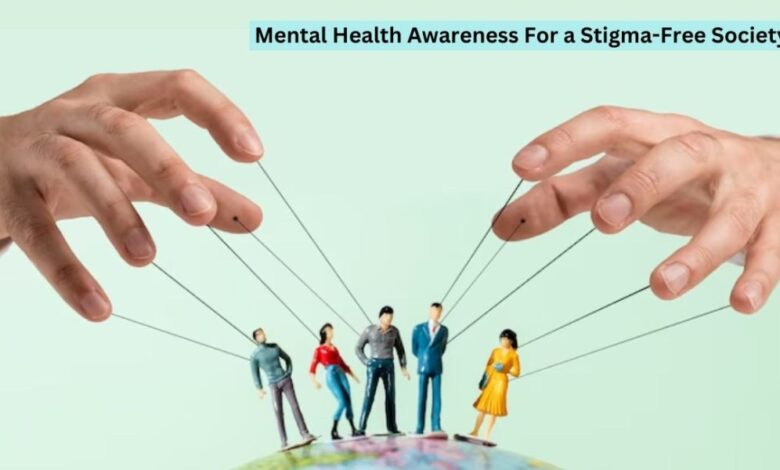Advancing Access to Mental Health Treatment in 2025

As the world moves deeper into 2025, the need to address mental health with urgency and compassion has never been more apparent. The global mental health crisis continues to impact people across all demographics—young and old, urban and rural, employed and unemployed. In response, mental health professionals, policymakers, and advocacy groups are pushing for solutions that not only treat symptoms but also remove the stigma, improve access, and integrate care into everyday life.
The Current State of Mental Health in America
According to the National Institute of Mental Health, nearly 1 in 5 adults in the United States lives with a mental illness. That’s over 50 million people dealing with conditions like depression, anxiety, bipolar disorder, PTSD, and schizophrenia—many without consistent access to care.
While public awareness of mental health has grown, significant barriers remain. These include long wait times for therapy, lack of insurance coverage, limited culturally competent providers, and a shortage of treatment options in rural areas.
In 2025, the conversation is shifting from simply acknowledging mental health to actively breaking the silence and ensuring that effective treatment is accessible to all.
From Stigma to Support: Changing Public Attitudes
For decades, mental illness was something to be hidden or ignored. But with high-profile advocates, social media campaigns, and a post-pandemic push for emotional wellness, that stigma is slowly eroding.
People are now more open about seeking therapy or discussing their struggles with anxiety or depression. Workplaces are offering mental health days. Schools are adding emotional wellness to their curriculum. And teletherapy platforms have made it easier than ever to talk to a licensed professional without leaving home.
Despite these gains, many individuals still feel ashamed or afraid to ask for help. In 2025, public campaigns and education remain crucial in reinforcing that mental health is just as important as physical health—and that getting help is a sign of strength, not weakness.
Addressing the Silent Struggle: Depression and Dual Diagnosis
One of the most pervasive—and often overlooked—mental health challenges is clinical depression. Left untreated, depression can lead to substance use, job loss, relationship breakdowns, and even suicide.
Many people dealing with depression are also battling co-occurring substance use disorders, a condition known as dual diagnosis. Treating both conditions simultaneously is vital to long-term recovery and stability.
For individuals facing this challenge, comprehensive support is available. Programs like the Dual Diagnosis Treatment for Depression offered at leading recovery centers provide integrated care tailored to meet the complex needs of patients.
These programs combine medical detox, behavioral therapy, medication management, and peer support—giving individuals the tools to manage both their mental health and their addiction in a sustainable way.
Expanding Access Through Specialized Mental Health Programs
Another significant advancement in 2025 is the rise of specialized mental health programs that provide targeted care for specific populations. These include programs designed for veterans, first responders, young adults, LGBTQ+ individuals, and people with trauma histories.
One such example is the comprehensive range of mental health treatment programs now available that focus on individualized care. These centers offer everything from cognitive behavioral therapy (CBT) and dialectical behavior therapy (DBT) to art therapy, trauma-informed care, and psychiatric medication support.
Personalized treatment ensures that each patient receives care aligned with their unique history, needs, and goals—moving away from one-size-fits-all approaches toward deeply compassionate, holistic healing.
The Role of Technology in 2025 Mental Health Care
Technology is playing a revolutionary role in how people access mental health services. In 2025, we are seeing:
- AI-powered mental health assessments for early detection and screening.
- Teletherapy platforms that connect clients to licensed professionals from anywhere in the country.
- Mobile apps for mood tracking, guided meditation, and therapy homework.
- Virtual support groups that help reduce isolation and offer peer support in real-time.
For rural populations and individuals with mobility challenges, tech-driven care is not just a convenience—it’s a lifeline.
At the same time, challenges such as data privacy, digital literacy, and tech fatigue must be addressed to ensure digital mental health services are safe and effective for everyone.
Insurance Coverage and Policy Changes
One of the biggest wins in recent years has been increased pressure on insurance companies to cover mental health services at the same level as physical health care.
Thanks to legislative changes and advocacy efforts, many states have enacted parity laws that require insurers to offer equal coverage. In 2025, policymakers continue to push for universal mental health access under government health programs and employer-sponsored insurance plans.
Still, out-of-pocket costs and limited networks can create financial barriers. Low-income families, undocumented individuals, and people without stable housing remain underserved. Expanding public funding, community-based mental health services, and sliding-scale clinics remains a high priority.
Looking Ahead: What Needs to Change
As we look to the future, here are key areas that demand further attention:
- Workforce Expansion: There is a dire shortage of licensed therapists, psychiatrists, and counselors. Investment in training programs and incentives for providers to work in underserved areas is essential.
- Cultural Competence: Mental health professionals must understand the cultural, religious, and societal dynamics that influence patients’ experiences. Diversity training and hiring more BIPOC and LGBTQ+ providers is crucial.
- Prevention and Early Intervention: Schools, pediatricians, and community centers should be trained to identify early warning signs of mental distress—so that help can be offered before a crisis occurs.
- Integrated Care: Physical and mental health must be treated together. Primary care providers should routinely screen for mental health concerns and work closely with mental health professionals for a seamless treatment plan.
Conclusion: A Collective Responsibility
Mental health is no longer a conversation for the sidelines—it’s a central public health issue that affects every community, workplace, and family. The progress made in recent years is promising, but the work is far from over.
By continuing to break the silence and invest in expanded, inclusive, and effective mental health treatment, we can create a world where everyone has the opportunity to heal and thrive—without shame, and without barriers.





